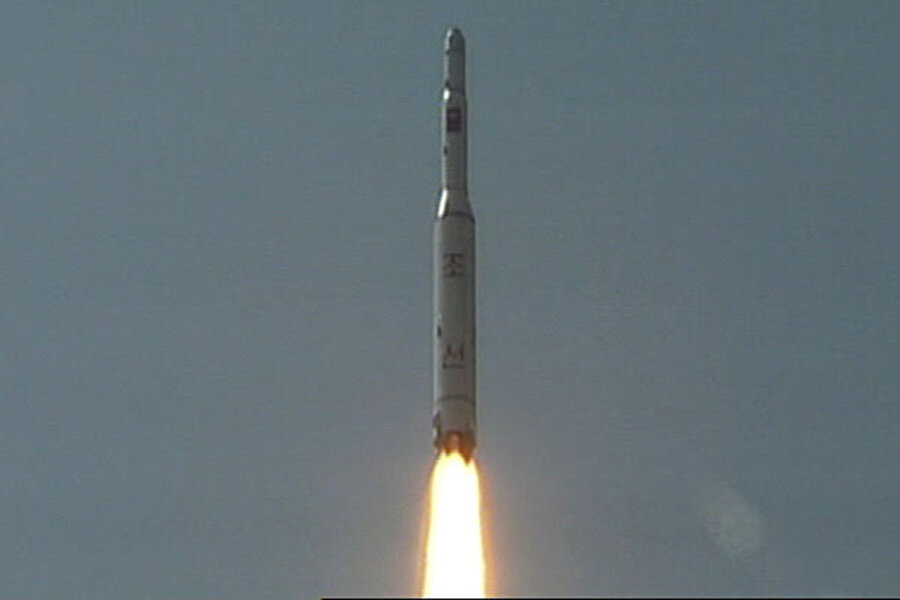Why hasn't North Korea fired its Musudan missile yet?
Loading...
North Korea began observing the major national holiday of founding leader Kim Il Sung’s birthday on Monday. Throughout the country, people waved celebratory banners and flags and lined up to place flowers at statues of the elder Kim and his son, the late Kim Jong Il. But at least one major event predicted by outside observers of Pyongyang did not happen: North Korea has not launched its widely expected test of a new Musudan missile – at least, not yet.
Why not?
Well, first we’ll note that most US officials and experts on North Korean from outside government circles have long used the word “around” when discussing April 15 and the notional missile launch. Satellite imagery has detected the movement of several Musudan models toward North Korea’s east coast, and some reports indicate that at least one of the missiles has been set upright on its road-mobile launcher.
Pyongyang often holds military exercises, parades, and demonstrations around Kim Il Sung’s birthday. But April 15 is not the hard deadline on which these events always occur.
The simple explanation for that is that North Koreans, even high-ranking ones, want to enjoy the holiday. That’s what International Crisis Group East Asia specialist Daniel Pinkston told the website NKNews.org.
“Too many people have to work when they test, especially high-level people who have other responsibilities and priorities on the holiday. The symbolism is important, they have ceremonial responsibilities, and they want a couple of days off,” Mr. Pinkston told NKNews.org.
On his Twitter feed, Pinkston put the chance that a missile test would not occur on the founding leader’s birthday at about 95 percent. It is an optional event that can be scheduled at any time, he noted. To hold it on the holiday would be akin to the pope getting his annual physical on Christmas.
Neither did North Korea hold a full-scale military parade on Monday’s “Day of the Sun.” In the past, such displays of weaponry have included new missiles, or at least new missile mock-ups. Some experts suspect Pyongyang of producing fake rockets in an effort to fool the rest of the world about its capabilities.
In fact, that’s one reason the possible forthcoming test could be so important. The Musudan is thought to be a medium-range weapon that could reach Japan or perhaps even Guam. But some US experts dispute this and consider it nothing but a short-range Scud with a face-lift.
A test could settle this question.
It’s also possible that Pyongyang has chosen not to fire its Musudan yet because of the tension on the Korean peninsula and the open discussion in the United States as to whether the US should try to shoot down the missile if it veered too close to Japan.
If this is the case, North Korea may wait until tensions subside before acting.
Meanwhile, South Korean Defense Minister Kim Kwan-jin said Monday that the launch remained imminent, but added that Seoul has detected no troop mobilizations or other signs that North Korea is preparing for full-scale war.







